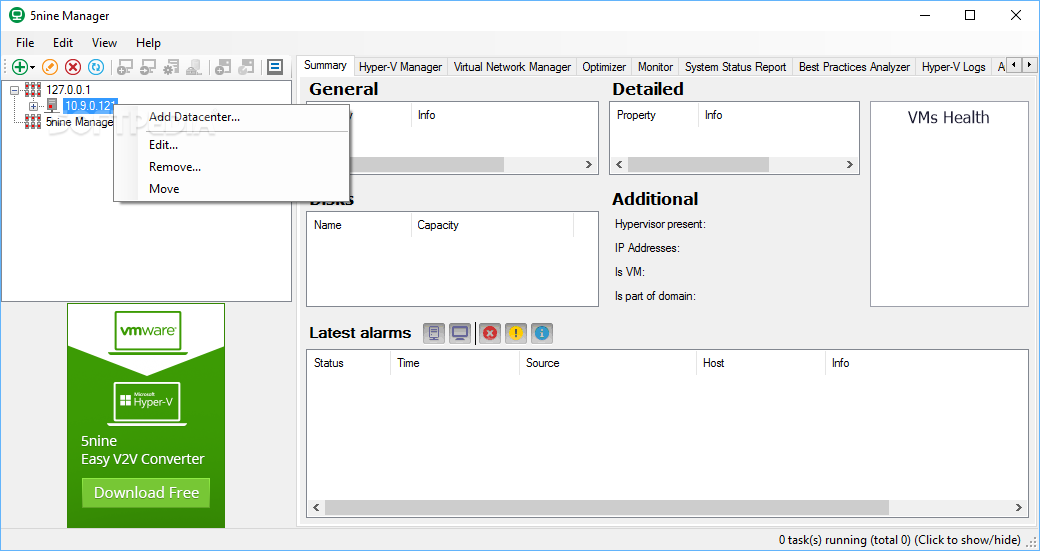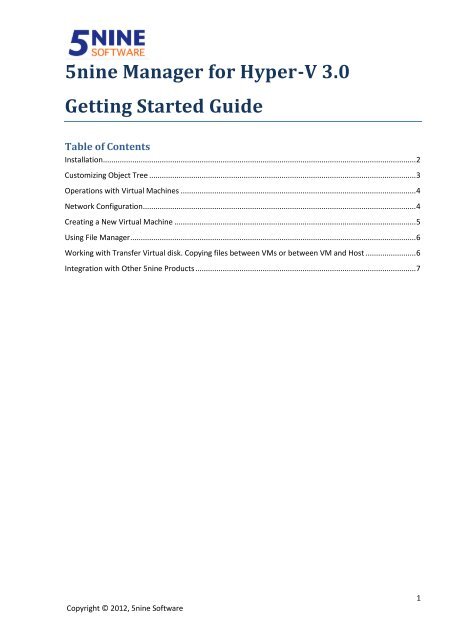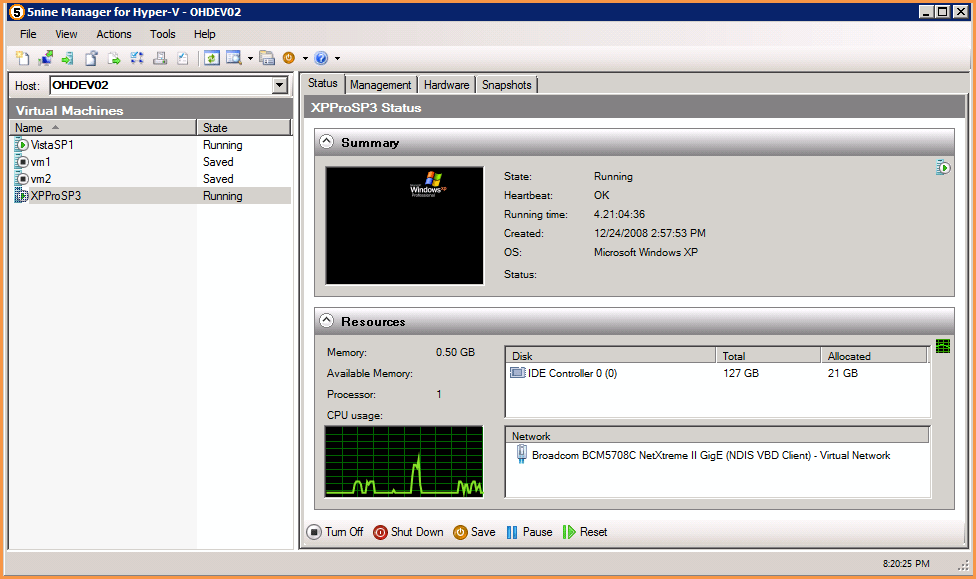
- 5NINE MANAGER UNABLE TO CREATE VM ARCHIVE
- 5NINE MANAGER UNABLE TO CREATE VM FULL
- 5NINE MANAGER UNABLE TO CREATE VM WINDOWS
5NINE MANAGER UNABLE TO CREATE VM FULL
At the same time, Hyper-V Export cannot be considered a full VM backup. Exporting VMs is not as fast as taking snapshots but, unlike Hyper-V snapshots, it allows you to create a full copy of the existing VM and send it for storage to another location. The process of exporting Hyper-V VMs is often compared to taking Hyper-V snapshots as well as creating backups. For example, you can create a copy of the production VM and export it to a non-production environment for testing and troubleshooting. Moreover, Hyper-V Export can be used for testing purposes. Hyper-V Export can be used for archiving a VM which you no longer need, or as an ad-hoc backup which allows you to capture VM data at a specific point in time.
5NINE MANAGER UNABLE TO CREATE VM WINDOWS
With the release of Windows Server 2012, this issue was eliminated.
5NINE MANAGER UNABLE TO CREATE VM ARCHIVE
In earlier Windows versions, the VM had to first be exported to a local storage space and copied across the network to a target location where archive files were stored. Hyper-V Export can be performed only on an on-demand basis.Īlso, you couldnât previously export a VM directly to a network share. In earlier Windows versions (prior to Windows Server 2012), you could export Hyper-V VMs only when they were turned off.


This operation can be performed when the VM is either online or offline. Hyper-V Export is the process of exporting a selected VM, including its virtual hard disk files, VM configuration files, and Hyper-V snapshots, to a single unit. Todayâs blog post attempts to discover whether the Hyper-V Export and Import functionality can be considered an effective VM backup alternative and how it compares to a comprehensive data protection that Hyper-V backup solutions, such as NAKIVO Backup & Replication, provide. Finally, the archived VM can later be used in case of hardware failure or data loss in order to restore the VM data. After that, you should specify whether you want the VM copy to be located within a Hyper-V Host or to move an exported VM across Hyper-V hosts. So, how does the Hyper-V Export and Import functionality work? When you export a Hyper-V VM, a copy of VM configuration files, VHD files, and VM snapshots can be created.

Portability within a Hyper-V environment is ensured through the Hyper-V Export and Import functionality, which allows you to easily copy and move a Hyper-V VM to a target location and then restore the VM to how it was at the time of export. One of the many benefits of virtualization is portability, meaning that you can easily move selected virtual machines (VMs) from one location to another without experiencing downtime or service disruption. Hyper-V Export and Import: What, Why, and How


 0 kommentar(er)
0 kommentar(er)
